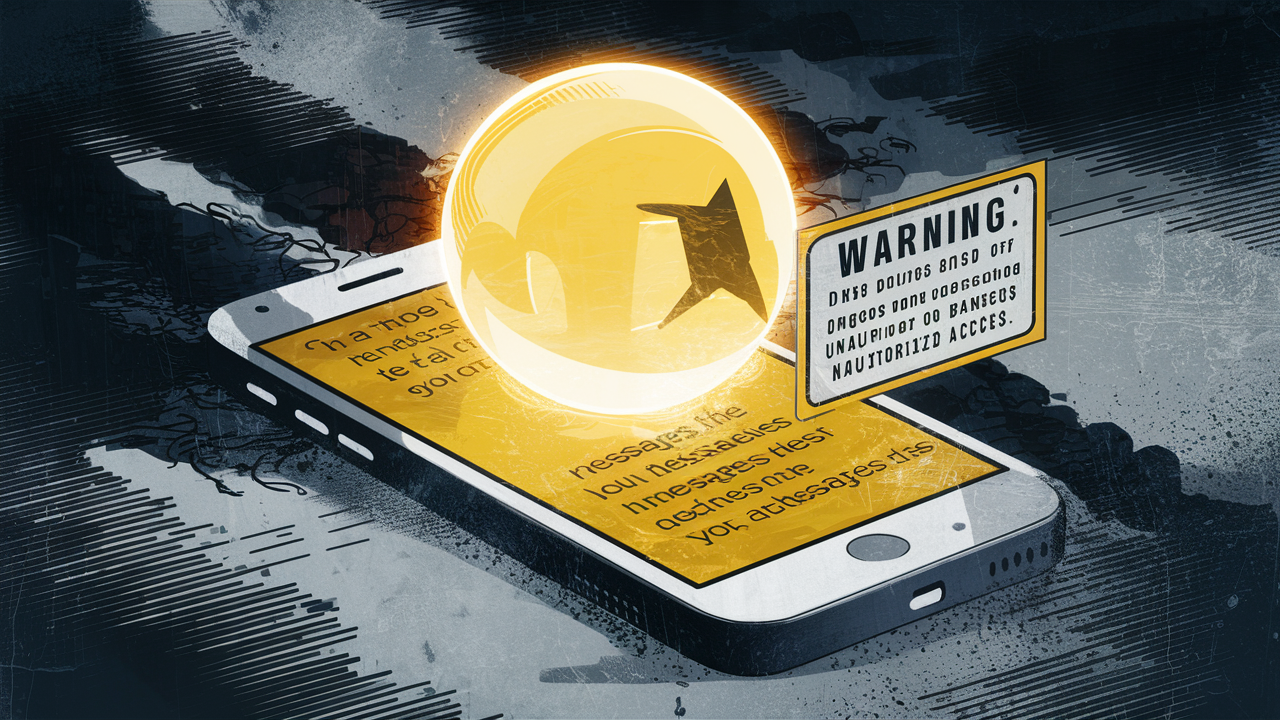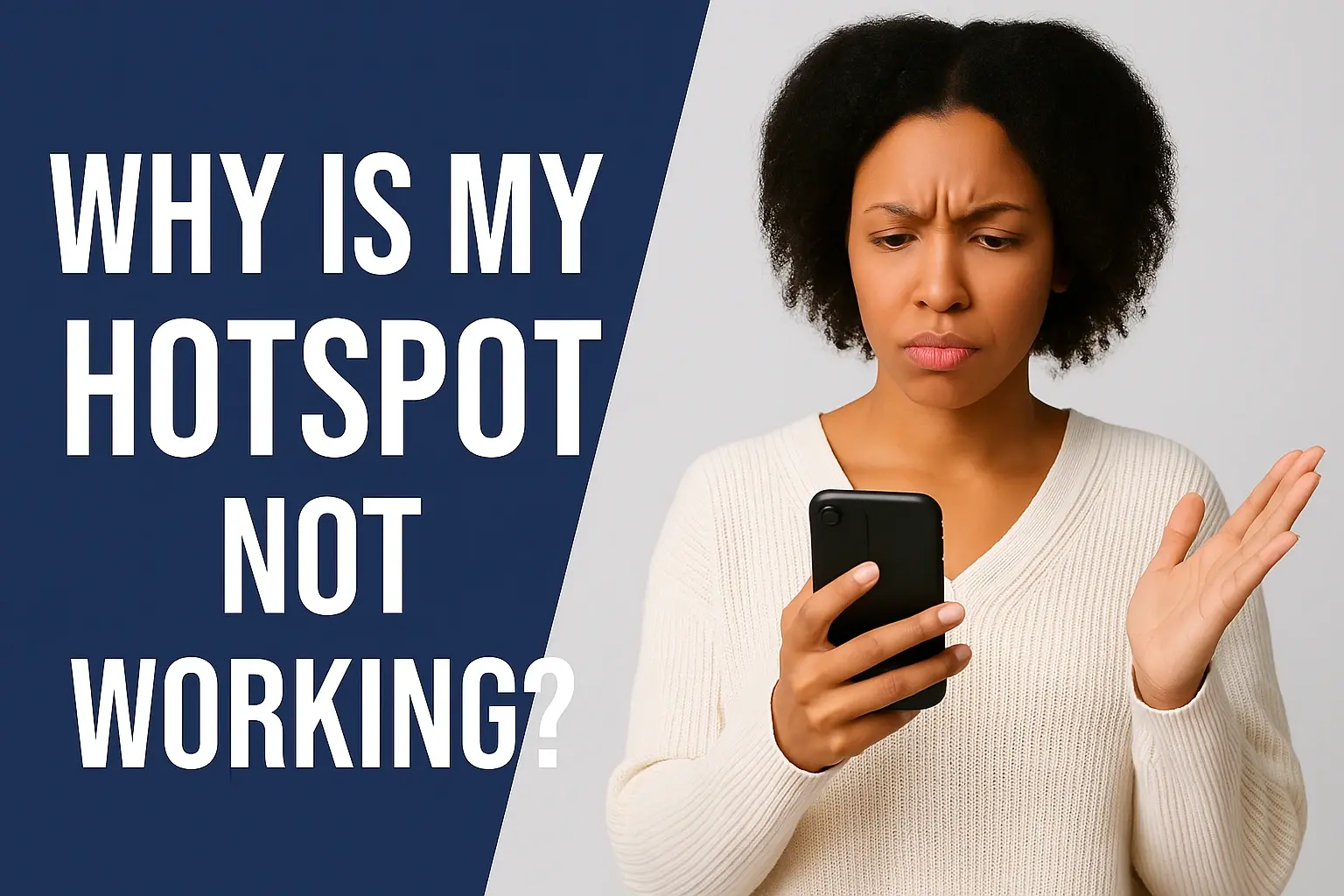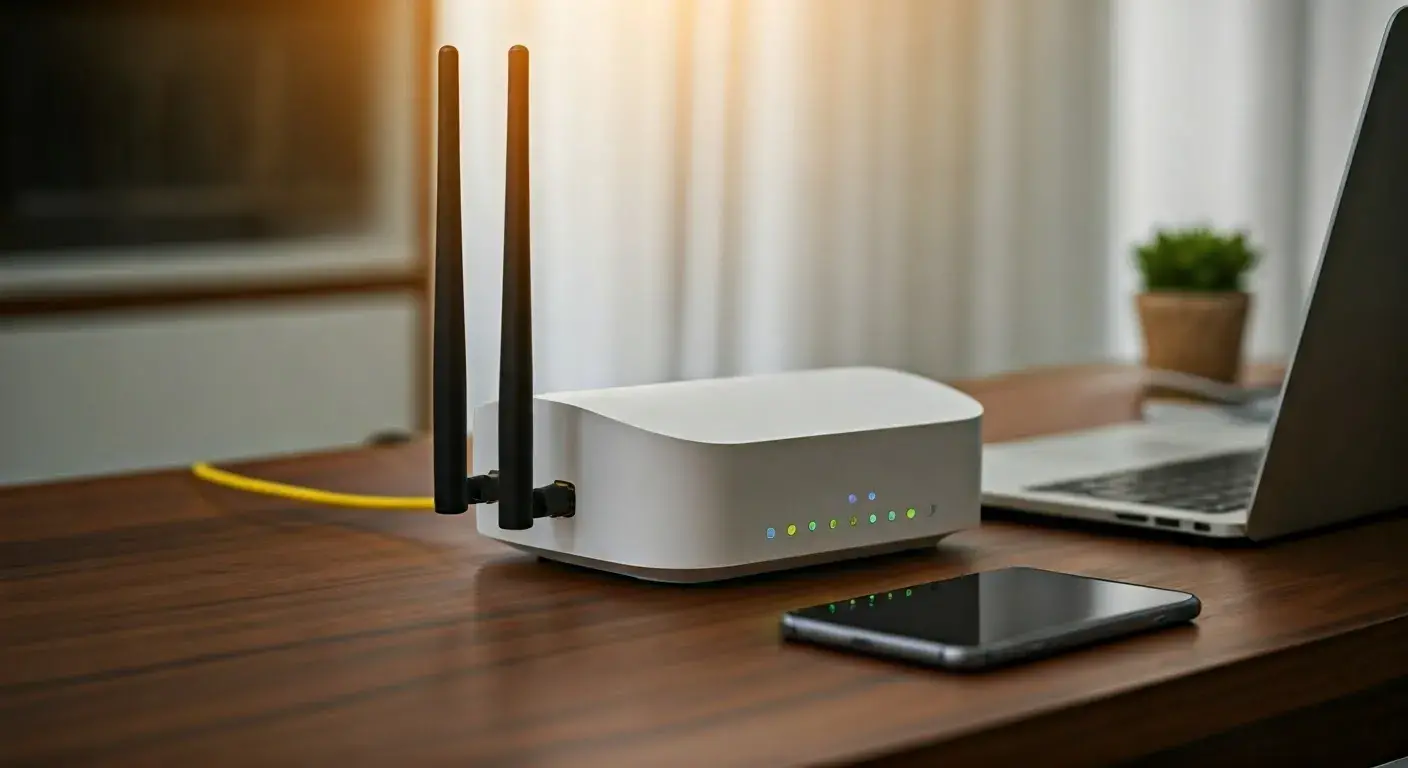Can someone read my messages without my phone?

Discover the surprising ways your messages might be accessed without your physical phone. This guide reveals the methods, risks, and crucial protective measures to keep your private communications secure in 2025.
Understanding How Your Messages Can Be Accessed
The question "Can someone read my messages without my phone?" is a pressing concern for many in our hyper-connected world. The answer, unfortunately, is a nuanced yes. While your phone acts as the primary gateway to your messages, it's not the only point of vulnerability. Modern technology and evolving cyber threats mean that unauthorized access can occur through various sophisticated means, even when your device is physically out of reach. Understanding these potential avenues is the first step in safeguarding your digital privacy. In 2025, the landscape of digital security is more complex than ever, with new vulnerabilities emerging regularly. It’s crucial to be aware of both common and advanced methods that could compromise your private conversations.
Digital communication, while convenient, relies on a chain of technologies and protocols. Each link in this chain can potentially be a weak point. From the applications you use to the networks you connect to, and even the security practices of the companies providing your services, every element contributes to your overall security posture. This section will delve into the fundamental ways your messages can be intercepted or accessed, setting the stage for a deeper exploration of specific threats and their countermeasures.
The core principle is that messages, once sent, exist in multiple places: on your device, on the recipient's device, and on the servers of the messaging service provider. Each of these locations can be a target. Furthermore, the journey of a message across networks can also be intercepted. Understanding these fundamental concepts helps demystify how unauthorized access might occur, moving beyond the simplistic idea that only physical possession of the phone grants access.
How Messages Travel: The Digital Journey
To grasp how messages can be read without direct phone access, we must first understand their journey. When you send a text message (SMS/MMS) or a message through an app like WhatsApp, Signal, or Telegram, it embarks on a digital path. This path involves your device, network infrastructure, and potentially, the servers of the messaging service.
- SMS/MMS: These traditional messages travel through your mobile carrier's network. They are generally not end-to-end encrypted by default, meaning your carrier can potentially access their content.
- App-based Messaging (e.g., WhatsApp, Signal, Telegram): Many modern messaging apps offer end-to-end encryption (E2EE). This means only the sender and the intended recipient can read the messages. The service provider cannot decrypt them. However, E2EE is only effective if implemented correctly and if both parties are using secure versions of the app. The messages are stored on your device and the recipient's device, and temporarily on the service provider's servers (often in an encrypted form).
The security of your messages depends heavily on the encryption protocols used, the security of the endpoints (your device and the recipient's device), and the policies of the service provider. Even with E2EE, vulnerabilities can exist in the implementation or in how the app handles backups and metadata.
Data Storage Locations and Vulnerabilities
Messages are not transient; they are stored. Understanding where this data resides is key to identifying potential access points:
- On Your Device: This is the most obvious location. If someone gains physical access to your unlocked phone, or can remotely control it, they can read your messages. However, even a locked phone can be vulnerable if security measures are weak or bypassed.
- On the Recipient's Device: Similarly, messages on the recipient's device can be accessed if their phone is compromised. This is a crucial point often overlooked; your privacy can be breached through someone else's compromised device.
- Cloud Backups: Many apps offer cloud backup services (e.g., Google Drive for WhatsApp, iCloud for iMessage). If these cloud accounts are compromised, or if the backups themselves are not adequately encrypted, your message history could be exposed. In 2025, cloud security remains a significant concern for personal data.
- Messaging Service Servers: While E2EE aims to prevent this, metadata (who you messaged, when, how often) is often stored by service providers. In some cases, unencrypted messages might exist temporarily on servers, especially if there are delivery issues or if E2EE is not universally applied.
Each storage location presents a different set of risks and requires different security strategies. A comprehensive approach to privacy considers all these potential points of access.
Common Attack Vectors: The Usual Suspects
While the idea of sophisticated hacking might seem like the primary threat, many message breaches occur through more common, often user-error-driven, vulnerabilities. These are the methods that exploit human psychology or basic security oversights. In 2025, these remain the most prevalent ways individuals' private communications are compromised. Understanding these common vectors is crucial for implementing effective preventative measures.
Physical Access and Observation
This is the most straightforward method. If someone can physically hold your phone, they can potentially read your messages. This doesn't necessarily mean they need to unlock it if you've left it unattended and unlocked.
- Unlocked Phone: Leaving your phone unlocked, even for a short period, is a significant risk. A curious individual or someone with malicious intent could quickly scroll through your recent conversations.
- Shoulder Surfing: This involves someone looking over your shoulder as you type or read messages. While seemingly simple, it's surprisingly effective in public spaces.
- Neighboring Devices: In shared environments or public Wi-Fi, Bluetooth or Wi-Fi direct features could, in rare cases, be exploited if not properly secured, allowing for proximity-based access, though this is less common for message content itself and more for data transfer.
The ease of this method makes it a persistent threat. The solution lies in consistent security habits: always locking your phone, being mindful of your surroundings, and disabling unnecessary connectivity features when not in use.
Malware and Spyware
Malware, including spyware, is software designed to infiltrate your device and steal information. This is a significant threat that can operate without the attacker ever touching your phone.
- Installation Methods: Spyware can be installed through malicious links in emails or texts, by downloading infected apps from unofficial sources, or even through exploiting unpatched software vulnerabilities. In 2025, phishing attacks remain a primary vector for malware delivery.
- Capabilities: Once installed, spyware can log keystrokes, take screenshots, record audio, access your camera, and importantly, read your messages from various apps. It can transmit this data to the attacker remotely.
- Stealth: Sophisticated spyware is designed to be undetectable, running in the background without raising suspicion. It can mimic legitimate processes, making it hard for the average user to identify.
Protecting against malware involves being extremely cautious about what you download and click on, keeping your operating system and apps updated, and using reputable antivirus software.
Phishing and Social Engineering
These attacks prey on human psychology rather than technical exploits. The goal is to trick you into revealing sensitive information or granting access.
- Phishing Scams: You might receive a fake email or text message (smishing) pretending to be from a legitimate service (e.g., your bank, a social media platform, or even your messaging app provider). These messages often urge you to click a link to "verify your account" or "update your security settings." The link leads to a fake login page designed to steal your credentials.
- Credential Harvesting: If an attacker obtains your login details for a messaging app's web version or cloud account, they can potentially access your messages without needing your phone.
- Impersonation: Attackers might impersonate a trusted contact to gain information or convince you to perform an action that compromises your security.
Vigilance is the best defense. Always scrutinize messages asking for personal information or urging immediate action. Verify the sender's identity through a separate, trusted channel if you are unsure.
Account Takeover (ATO)
This involves an attacker gaining unauthorized access to your online accounts, including those linked to your messaging services.
- Weak Passwords: Reusing the same weak password across multiple services is a common vulnerability. If one service is breached, attackers can try those credentials on others.
- Credential Stuffing: Attackers use lists of stolen usernames and passwords from previous data breaches to try logging into various services.
- SIM Swapping: In this attack, a fraudster convinces your mobile carrier to transfer your phone number to a SIM card they control. This allows them to intercept SMS verification codes, which are often used for password resets or two-factor authentication, thereby taking over your accounts. This is a particularly dangerous threat in 2025 as it bypasses many standard security measures.
Strong, unique passwords and enabling two-factor authentication (2FA) wherever possible are critical defenses against account takeover. For mobile numbers, be wary of unsolicited calls or requests from your carrier that seem suspicious.
Unsecured Wi-Fi Networks
Connecting to public, unsecured Wi-Fi networks can expose your data.
- Man-in-the-Middle (MitM) Attacks: On an unsecured network, an attacker can position themselves between your device and the internet. They can intercept unencrypted traffic, potentially including messages sent over non-E2EE apps or metadata from E2EE apps.
- Fake Hotspots: Attackers can set up fake Wi-Fi hotspots that mimic legitimate ones (e.g., "Free Airport Wi-Fi"). When you connect, all your traffic passes through their controlled network.
Avoid conducting sensitive activities, like messaging, on public Wi-Fi. If you must connect, use a Virtual Private Network (VPN) to encrypt your traffic.
Advanced Threats: Sophisticated Snooping Methods
Beyond the everyday risks, more advanced and technically sophisticated methods exist that can allow someone to read your messages without direct physical access to your phone. These often require a higher level of technical skill or access to specialized tools and exploits. In 2025, understanding these threats is vital for anyone dealing with high-stakes privacy concerns or targeting by sophisticated adversaries.
Network Interception and Traffic Analysis
While E2EE aims to protect message content, the metadata—information about your communications—can still be vulnerable.
- Metadata Collection: Even if the content of your messages is encrypted, who you are communicating with, when, and how frequently can be logged by network providers or through sophisticated network surveillance. This metadata can reveal significant insights into your relationships and activities.
- Compromised Network Infrastructure: In rare, high-level scenarios, attackers might compromise routers or network switches along the communication path to intercept traffic. This is typically the domain of state-level actors or highly organized criminal groups.
- Compromised Wi-Fi/Cellular Towers: Advanced attackers might set up rogue cell towers or compromise legitimate ones to intercept traffic. This is extremely difficult and costly to execute but represents a significant threat in targeted surveillance.
While direct content interception is difficult with E2EE, metadata analysis remains a concern. Using VPNs can help mask your IP address and encrypt your traffic, making it harder to track your online activities.
Exploiting App Vulnerabilities
No software is perfect, and messaging apps, like any other software, can have security flaws.
- Zero-Day Exploits: These are vulnerabilities that are unknown to the software vendor and for which no patch exists. Attackers who discover or purchase zero-day exploits can use them to compromise devices and access app data. Such exploits are rare and highly valuable.
- Older App Versions: Failing to update your messaging apps leaves you vulnerable to known exploits that have already been patched in newer versions. Attackers can scan for devices running outdated software.
- Web Versions and Desktop Clients: If you use web versions or desktop clients of messaging apps, the security of your computer or browser becomes paramount. Malware on your computer could potentially access messages synced from your phone.
Regularly updating your apps and operating system is the most effective defense against known vulnerabilities. For critical communications, consider using apps known for their robust security and frequent updates, like Signal.
Cloud Backup Vulnerabilities
As mentioned earlier, cloud backups can be a treasure trove for attackers if not secured properly.
- Unencrypted Backups: Some services might offer backups that are not end-to-end encrypted. If the cloud storage itself is breached, your message history could be exposed.
- Compromised Cloud Account: If the cloud account linked to your backups (e.g., Google Account, Apple ID) is compromised, an attacker can download your backup and extract message data. This is why securing your cloud accounts with strong passwords and 2FA is critical.
- Third-Party Backup Apps: Using unofficial third-party apps to back up your messages introduces significant risk, as these apps may not have adequate security measures and could be designed to steal your data.
Always opt for end-to-end encrypted backup options if available. Regularly review the security settings of your cloud storage accounts.
Access via Linked Devices and Web Interfaces
Many messaging services allow you to link your account to other devices or use web interfaces.
- WhatsApp Web/Desktop, Telegram Web, iMessage on Mac: If your phone is online and linked to these services, and someone gains access to your computer or browser session where these are active, they can read your messages. This is particularly risky if you don't log out of these sessions properly.
- Compromised Linked Devices: If another device linked to your messaging account (e.g., a tablet, a computer) is compromised, the attacker can access messages through that device.
Always log out of web and desktop clients when you are finished using them, especially on shared or public computers. Regularly review the list of linked devices in your messaging app's settings and revoke access to any you don't recognize.
Forensic Data Extraction
This is a highly sophisticated method, typically employed by law enforcement or specialized digital forensics teams, but potentially accessible to advanced adversaries.
- Physical Device Access: Even with a locked phone, specialized tools and techniques can sometimes extract data directly from the device's storage, bypassing the operating system's security. This often requires physical possession and advanced hardware.
- Exploiting Hardware Vulnerabilities: Certain hardware-level vulnerabilities can be exploited to gain access to data. These are extremely rare and difficult to execute.
For the average user, protection against forensic extraction is difficult. The best defense is to maintain strong device security (passcodes, biometrics), avoid leaving devices unattended, and be cautious about who has physical access to your devices.
Fortifying Your Digital Walls: Essential Protective Measures
Knowing the risks is only half the battle. The other, more crucial, half is implementing robust preventative measures to protect your messages. In 2025, a multi-layered approach is essential, combining technical safeguards with vigilant personal habits. This section outlines actionable steps you can take to significantly reduce the chances of your messages being read without your consent.
Secure Your Device Itself
Your phone is the primary key to your messages. Securing it is paramount.
- Strong Passcodes/Biometrics: Use a strong, unique passcode (not easily guessable like 1234 or your birthdate). Enable fingerprint or facial recognition for an extra layer of security. Set your screen lock to time out quickly.
- Keep Software Updated: Regularly update your phone's operating system and all your applications. Updates often contain critical security patches that fix vulnerabilities. Enable automatic updates if available.
- Disable Unnecessary Connectivity: Turn off Bluetooth, Wi-Fi, and NFC when you're not actively using them, especially in public places. This reduces potential attack vectors.
- Review App Permissions: Periodically check the permissions granted to your apps. Does that game really need access to your contacts or microphone? Revoke unnecessary permissions.
- Install Reputable Security Software: Consider using a trusted antivirus or anti-malware app, especially on Android devices.
Choose Secure Messaging Apps
The app you use makes a significant difference.
- Prioritize End-to-End Encryption (E2EE): Apps like Signal, WhatsApp, and Telegram (with its "Secret Chats" feature) offer E2EE. This means only you and the recipient can read messages. Ensure E2EE is enabled for all your conversations.
- Understand App Policies: Read the privacy policies of your messaging apps. Understand what data they collect, how they store it, and who they share it with.
- Verify Contact Security: Many E2EE apps allow you to verify the identity of your contacts (e.g., by scanning a QR code or comparing security codes). This helps prevent man-in-the-middle attacks where someone impersonates your contact.
- Avoid SMS/MMS for Sensitive Info: Traditional SMS and MMS are generally not encrypted and can be accessed by your carrier. Use them only for non-sensitive communications.
In 2025, Signal is widely regarded as one of the most secure messaging apps due to its strong E2EE implementation and minimal data collection.
Strengthen Account Security
Protecting your online accounts is crucial for messaging app security.
- Unique, Strong Passwords: Use a different, complex password for each online service, including your messaging apps and associated cloud accounts. A password manager can help you generate and store these securely.
- Enable Two-Factor Authentication (2FA): This is one of the most effective security measures. It requires a second form of verification (e.g., a code from an authenticator app or SMS) in addition to your password. Enable 2FA on all your messaging accounts and linked cloud services (Google, Apple ID, etc.).
- Beware of SIM Swapping: Be vigilant about your mobile number. If you receive suspicious communications from your carrier or encounter issues with your service, contact your carrier immediately through a known, trusted channel. Consider adding a PIN or password to your mobile account with your carrier.
Practice Safe Browsing and Downloading
Your online behavior directly impacts your device's security.
- Be Wary of Links and Attachments: Never click on suspicious links or download attachments from unknown senders or unexpected emails/texts. These are common vectors for malware and phishing.
- Download Apps from Official Stores: Only download apps from the official Google Play Store or Apple App Store. Avoid third-party app stores, which are more likely to host malicious software.
- Use a VPN on Public Wi-Fi: When using public Wi-Fi, always use a reputable VPN service. This encrypts your internet traffic, making it much harder for attackers on the same network to intercept your data.
Manage Cloud Backups Wisely
Backups are convenient but can be a security risk if not managed properly.
- Enable E2EE Backups: If your messaging app offers end-to-end encrypted backups, enable this feature. This ensures that even if your cloud account is compromised, your message history remains unreadable.
- Secure Your Cloud Accounts: As mentioned, strong passwords and 2FA for your Google Account, Apple ID, or other cloud services are essential.
- Regularly Review Backup Settings: Check your messaging app's backup settings periodically to ensure they are configured as you intend.
Physical Security and Awareness
Don't underestimate the importance of physical security.
- Lock Your Phone: Always lock your phone when you're not using it. Set a short auto-lock timer.
- Be Mindful of Your Surroundings: Avoid reading or typing sensitive messages in public places where people can easily see your screen ("shoulder surfing").
- Secure Your Devices at Home: Ensure your home Wi-Fi network is secured with a strong password. Be mindful of who has access to your devices within your own home.
Legal and Ethical Considerations
The ability to access someone's messages without their consent raises significant legal and ethical questions. While technology can enable such access, the ramifications are profound and vary by jurisdiction. In 2025, understanding these boundaries is crucial for both individuals and organizations. This section explores the legal landscape and ethical implications surrounding unauthorized message access.
Laws Regarding Unauthorized Access
Most jurisdictions have laws in place to protect individuals' privacy and prevent unauthorized access to their communications.
- Computer Fraud and Abuse Act (CFAA) in the US: This act prohibits intentionally accessing a computer without authorization or exceeding authorized access. This can apply to accessing someone's messaging accounts or devices.
- General Data Protection Regulation (GDPR) in the EU: GDPR protects personal data, including communications. Unauthorized access and processing of such data can lead to severe penalties.
- Privacy Laws Worldwide: Many countries have specific legislation protecting electronic communications, wiretapping, and unauthorized access to personal data. These laws often carry criminal penalties, including fines and imprisonment.
The specific laws and their enforcement can vary significantly. However, the overarching principle is that accessing someone's private messages without their explicit consent or legal authorization is illegal in most parts of the world.
Ethical Implications of Spying
Beyond the legal aspects, there are significant ethical considerations.
- Breach of Trust: Spying on someone's messages is a profound breach of trust, damaging relationships and undermining personal autonomy.
- Violation of Privacy: Everyone has a right to private communication. Unauthorized access violates this fundamental right.
- Potential for Misuse: Information obtained through spying can be used for blackmail, manipulation, or other malicious purposes.
Ethically, accessing someone's private communications without their knowledge or consent is widely considered unacceptable and harmful.
Exceptions and Legal Intercepts
There are limited circumstances where access to communications is legally permitted.
- Law Enforcement with a Warrant: Authorized law enforcement agencies can obtain court orders or warrants to access communications data as part of a criminal investigation. This process is governed by strict legal procedures.
- Parental Monitoring (Limited): In some jurisdictions, parents may have limited rights to monitor the communications of their minor children. However, these rights are often restricted and can be subject to legal challenges.
- Employer Monitoring (Specific Conditions): Employers may monitor employee communications on company-owned devices or networks, but this is typically subject to strict policies, employee consent, and legal compliance. Unmonitored personal devices are usually protected.
It is crucial to understand that these exceptions are narrow and require due legal process. Unauthorized access, even if you believe you have a "good reason," is generally illegal and unethical.
What to Do If You Suspect Your Messages Have Been Read
Discovering or suspecting that your private messages have been accessed without your permission can be a deeply unsettling experience. It's important to act quickly and methodically to secure your accounts and devices. In 2025, swift action can mitigate further damage and help restore your digital security. This section provides a step-by-step guide on how to respond if you believe your communications have been compromised.
Immediate Security Steps
The first actions you take are critical.
- Change Passwords Immediately: Start by changing the passwords for all your messaging apps, email accounts, social media, and any cloud storage services. Use strong, unique passwords for each.
- Enable or Verify 2FA: Ensure Two-Factor Authentication is enabled on all your accounts. If it was already enabled, verify its settings and consider using an authenticator app over SMS-based 2FA, as SMS can be vulnerable to SIM swapping.
- Review Linked Devices: Check the settings in your messaging apps and other online accounts for a list of linked devices or active sessions. Log out of any devices or sessions you don't recognize or no longer use.
- Scan Your Devices for Malware: Run a full system scan on your phone and any other devices you use for messaging (computers, tablets) using reputable antivirus and anti-malware software. Remove any detected threats.
Investigate the Source of the Breach
Understanding how the compromise happened can help prevent future incidents.
- Check Login History: Many services provide a login history. Review this for any suspicious activity, such as logins from unfamiliar locations or devices.
- Examine App Permissions: Review the permissions granted to all your apps. Revoke any permissions that seem unnecessary or suspicious, especially for apps you don't use often.
- Consider Recent Activity: Think about any unusual links you clicked, apps you downloaded, or information you shared recently. This can provide clues about the method of compromise.
- Check for Unfamiliar Apps: Look for any applications installed on your device that you don't recognize. Uninstall them immediately.
Contact Relevant Parties
Depending on the situation, you may need to involve others.
- Your Mobile Carrier: If you suspect SIM swapping or unauthorized access to your phone number, contact your mobile carrier immediately to secure your account.
- Messaging Service Provider: While they may not be able to recover specific messages, contacting the support of your messaging app can sometimes provide guidance or help secure your account.
- Law Enforcement: If you believe you are a victim of serious cybercrime, such as stalking, harassment, or identity theft, consider reporting it to your local law enforcement agency.
Further Security Enhancements
Once the immediate crisis is managed, bolster your defenses.
- Consider a Factory Reset: For severe compromises, especially if malware is suspected, a factory reset of your phone might be necessary. Back up essential data first, but be cautious about restoring apps or settings that could reintroduce malware.
- Use Secure Messaging Apps: If you weren't already, switch to messaging apps that offer strong end-to-end encryption and have a good reputation for security, like Signal.
- Educate Yourself: Stay informed about the latest cybersecurity threats and best practices. The digital landscape is constantly evolving.
- Physical Security: Be more diligent about locking your phone and being aware of your surroundings when using it.
Taking these steps can help you regain control of your digital privacy and minimize the impact of a security breach.
In conclusion, the question of whether someone can read your messages without your phone is complex, but the answer leans towards yes, through various sophisticated and sometimes simple methods. From malware and phishing to account takeovers and network vulnerabilities, the digital realm presents numerous potential access points. However, by understanding these threats and implementing robust security measures—such as strong passwords, two-factor authentication, secure messaging apps, and vigilant online behavior—you can significantly fortify your digital defenses. Prioritizing your privacy is an ongoing process, and staying informed is your most powerful tool against those who seek unauthorized access to your private communications in 2025 and beyond.





